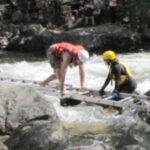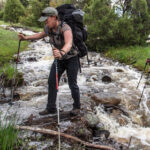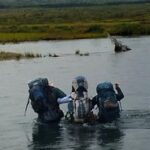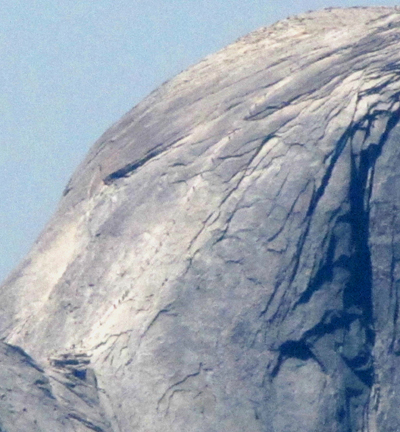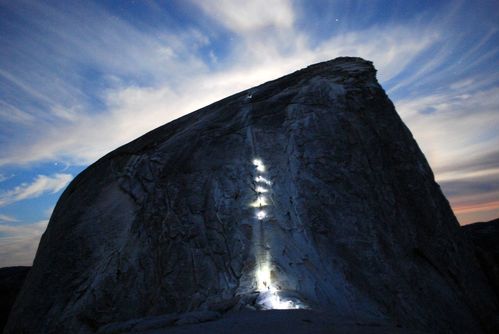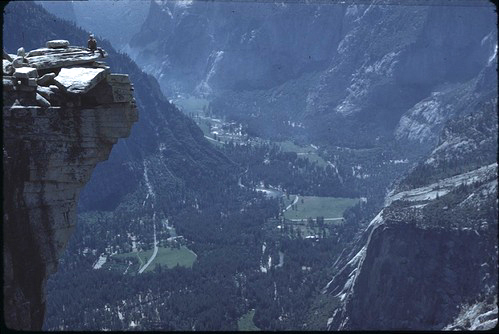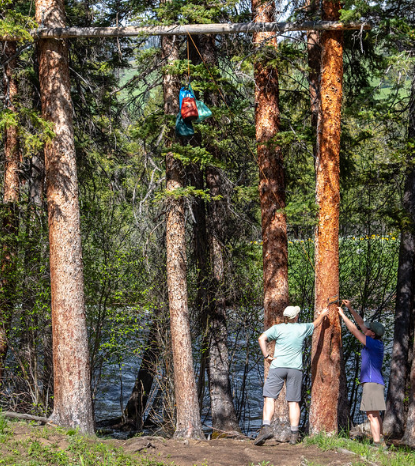
Fairly Good Weather Backpacking Advice
© 2025
from De Anza Outdoor Club faculty advisor Mary Donahue, mostly geared towards our various Yosemite trips. This advice is not complete without the pre-trip meeting. This could easily be renamed ‘Camping Advice.’
Backpacking will not be an official part of our trips to the Grand Tetons, but you could get a permit for a backpack adventure if you plan ahead and bring appropriate gear. A few details about permits, etc. for Grand Teton national park adventures are at Grand Tetons backpacking.
Experienced backpackers might pick up a few things from this page,
but it is mostly for first time backpackers
or those who may have gone before, but didn’t have a great time.
Books about backpacking can be found in the 796.51 section of public libraries.
Look at the Wilderness First Aid outline at this website for a long list books.
First-timer’s instructions has instructions for beginning snow campers for the De Anza College Outdoor Club winter trip. Experienced people will probably pick up a few useful ideas.
You don’t need to rush out and buy a bunch of expensive new clothes and gear. Check Snow or rain camp must-haves for budget minded ideas. Let us look at what you have at a pre-trip meeting, it might be good enough.
When you backpack you carry everything you need to survive (shelter, food, water, map, sunscreen, clothes for bad weather, etc.) and most people bring a few things for fun (camera, a star chart, a paperback book, a tiny deck of cards). Each experienced backpacker will probably have strong opinions about what they like to eat and what luxuries they are willing to carry.
Willing to carry is the key. You should do regular extra exercise before the trip to get in shape. Walking up and down stairs for 15 minutes per day, wearing your hiking boots and a pack, is a good addition to your regular running or walking. Load the pack with at first one, then eventually six or twelve or . . . , one-liter bottles of water.
Even if you are in good shape, your pack will feel heavy. Each step you take will be harder than normal.
So people quickly decide they don’t need some things. You can eat almost anything with only a spoon, so many don’t bring a fork, and some buy a Lexan spoon. A cloth bag of spare clothes works as a pillow. You really don’t need a whole chess set to have fun, or you can buy or invent a lightweight model.
Is your group all on the same wavelength about what to bring, how to backpack? Try the Backpack application, pretest and opinion survey
How many miles per day? Grand Teton National Park says: “Backpackers should expect to travel no more than 2 miles per hour (3.2 km per hour). Add an additional hour for every 1,000 feet of elevation gain. Trip planning that requires going over more than one pass in a day is not recommended.”
This advice from Grand Canyon National Park applies to any hike or backpack:
Avoid Huffing and Puffing
IF YOU CAN TALK WHILE YOU ARE WALKING, YOU ARE WALKING THE PERFECT SPEED.
When you huff and puff your body is not getting enough oxygen. Walking at a pace that allows you to be able to walk and talk means that your legs and your body are getting the oxygen needed to function efficiently.
When your body generates fewer metabolic waste products, you enjoy your hike more and you feel better at the end. At times it may seem like you are walking too slow, but at an aerobic pace (sometimes even baby-sized steps when the trail is steep) your energy reserves will last longer. You will also feel much better that night and the next day.
Take a Break
TAKE A TEN MINUTE BREAK AT LEAST ONCE EVERY HOUR.
A break of ten minutes helps remove the metabolic waste products that build up in your legs while hiking. Take a break at least every hour. Sit down and prop your legs up. Eat some food, drink some fluids, and take this time to enjoy and appreciate the view. These efficient breaks can recharge your batteries. In the long run, breaks will not slow you down.
Crossing streams safely includes advice from Mount Rainier National Park, Yellowstone National Park, Great Smoky Mountains, and Yosemite National Park
________________________________________
This page became too long so I moved some info to Bears
including info about what to do if you see a bear, how bears get into cars in Yosemite, how to store food during a climb in Yosemite and about the Backpackers’ Cache bear resistant food container. For our trips, the club owns enough canisters for a small group, or for each in a large group to prepack their food/toiletries in advance to get an idea of whether they need to rent more.
Using a bear resistant food storage container has advice on how to pack one more efficiently.
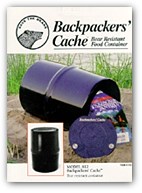 (Some bear resistant food containers have been invented made of Kevlar, fabric and/or fabric aluminum, but are not allowed at many parks. Some are hard sided, but the lid can be peeled open by a strong bear. Check in advance to see which brands of hard plastic models are okay where you go.)
(Some bear resistant food containers have been invented made of Kevlar, fabric and/or fabric aluminum, but are not allowed at many parks. Some are hard sided, but the lid can be peeled open by a strong bear. Check in advance to see which brands of hard plastic models are okay where you go.)
Insulation for the outside of a Garcia Canister or other bear resistant food storage only makes it easier for the bear to pick up the canister in it’s teeth, or with paws, and take it away.
________________________________________
You might also want to look at the Camping equipment checklist
Index to the major sections of this page:
Must bring for each large group (or perhaps for each couple or person)
Must bring backpacking for each person
Some (crazy?) people think these are optional for backpacking:
Do not bring these backpacking
To keep down on weight backpacking
Yosemite National Park WILDERNESS PERMITS
which also has details about the Half Dome cables hike/overnight
‘Leave No Trace’ camping has these basic principles:
________________________________________
Must bring for each large group (or perhaps for each couple or person)
spare sunglasses, flashlight bulb, batteries,
big first aid kit (spend the money to get really good, long lasting, water resistant bandaids),
Wilderness first aid outline for a review: Wilderness first aid outline
stove repair kit,
water purifier/filter (or two or more), purifier repair kit, chemical purifier as a back-up, but note:
From National Center for Biotechnology Information, U.S. National Library of Medicine “Diarrhea is the most common illness limiting long-distance hikers. Hikers should purify water routinely, avoiding using untreated surface water. The risk of gastrointestinal illness can also be reduced by maintaining personal hygiene practices and cleaning cookware.” Preferably use a water purifying pump, but bring chemical means should the pump die. Be sure the chemical method you choose will work against cryptosporidium and giardia and note how long (four hours??) the water must be treated for the treatment to be effective. Note also that iodine tablets are not effective against cryptosporidium / giardia and some people are allergic to iodine.
__________________________
pair of nail clippers (a jackknife scissors won’t work on delicate jobs)
Tap Plastics and other stores sell a tiny eyeglasses repair kit
stove(s), fuel, pans, pot gripper, bear-proof food canisters
Must bring backpacking for each person
Lots of details about choosing these are at must haves for recreating in interesting weather.
backpack,(preferably with hip and shoulder pads and a quick-release waist buckle), some kind of rain cover for the pack, and/or waterproof bags inside for things
warm, light sleeping bag, not one of the big heavy cotton stuffing kinds, (wrapped in something waterproof, maybe a heavy duty plastic bag within the stuff bag. Trash compactor bags come in 3.0 mil thickness, much thicker than leaf bags)
flashlight (electric torch) with spare bulb and at least alkaline batteries (not rechargeable, they don’t last long enough). Lithium batteries are expensive but way lighter. Unscrew a screw-on type or rubber band the switch so it can’t accidentally go on in your pack. No, your cell phone flashlight function will NOT last long enough or be bright enough.
extra food, especially food you can eat without cooking or when you are too tired to cook
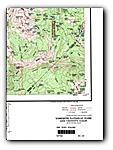 map and compass (and knowledge of how to use them)
map and compass (and knowledge of how to use them)
warm layers, preferably including polypropylene long johns and long sleeve top, down, pile or fleece vest, sweater, (not cotton sweatshirt)
hat with a wide brim
sunglasses with good U.V. protection (preferably with croakies or other eyewear retainers)
personal first aid kit (with not-cheap bandaids)
You should plan to bring an adequate supply of your prescriptions for a longer-than-you-anticipated road trip and over-the-counter remedies for any ailment you get that could spoil your trip, possibly including: aspirin, Ibuprofen, acetaminophen, Naproxen Sodium, athlete’s foot, anti-itch hydrocortisone, cold and cough syrups and lozenges, allergy tablets / eye relief / sinus relief, stomach ache, Breathe Right, Imodium, calamine lotion, (please check their expiration dates),
Over-the-counter medications can be ineffective if not used as directed on the label, or can even cause potentially long-lasting or even life-threatening consequences. “Oooops, was I supposed to take one of this tablet every six hours or two every four hours?” Don’t expect that you will remember, even if it is something you take regularly. If you re-pack them into small containers be sure to copy and pack the instructions (and expiration date) with them.
Yosemite Search and Rescue recommends: “Recreating with medical conditions: Medical conditions should not prevent recreationists from enjoying Yosemite’s vast wilderness; however, proper management of medical conditions is essential for a successful wilderness experience. Whether hiking in a party of two or ten, it is important for fellow hiking companions to be aware of medical conditions in the group and proper treatment and management of medical conditions. Recreationists who are prescribed medication should carry the medication (plus a few extra doses) in a personal pack so that they don’t miss a dose if an outdoor outing goes awry or longer than anticipated.”
jackknife, waterproof wood matches and fire starter (candle, lighter, or homemade)
one lightweight unbreakable spoon and cup,
insect repellent (read some advice at: insect repellant, including a possible answer to the question: Are bears attracted to citronella?
high SPF sunscreen (put a layer on in the morning so you won’t forget to use it),
chapstick with sunscreen
water bottle (2, 3?) with tight lid that has never had anything but water in it. If you mixed lemonade in it, it has a scent and you can’t have it in your tent overnight. If you choose to use a bladder with the long plastic straw, are you sure it won’t leak and soak your sleeping bag?
moleskin (and “Second Skin” in case it doesn’t work)
one pair of shorts and maybe one pair of long pants (fleece?) with room enough under them for a layer of long johns,
one shirt to hike in and one to wear to bed (don’t bring too many extra changes of clothes; just let your one pair of hiking shorts get dirty. But do bring changes of socks, and underwear. No cotton socks and some people say no cotton at all, but many wear cotton t-shirts and shorts.
Leave no trace When going into the wilderness, choose hiking, backpacking, and camping gear and clothing that are natural earth tone colors like green, brown, tan. (Some websites also recommend black, but it, along with flowery prints and bright colored clothing, attract insects that sting.) Bright colors like white, purple, blue, red and yellow do not blend in with the environment, can be seen from miles away and contribute to a crowded feeling. But do carry at least one item of very visible clothing and/or gear to help rescuers find you if needed.
hiking boots: be sure that they fit well enough when laced up tight that your toes don’t cram into the toe end when you hike downhill
(not cotton) socks, probably two pairs on at once with your boots, one thin and one thick
whistle (you can blow on one a lot longer than you can yell for help and it will carry much farther than your voice – three blasts in a row is a help needed signal)
toilet paper/ trowel and knowledge of how to use them, find out how deep you need to bury your waste and how far from water source (stream/lake) and trail — please use the composting toilets/outhouses where they are available
personal I.D.s such as driver’s license, medical insurance card, credit card, power of attorney for health care card, auto assn card, dimes and quarters for phone calls, traveler’s checks, spare car keys.
You can put the I.D s in a baggie and then into a fanny pack that holds your most irreplaceable stuff (including your epi-pen or other medications). In one pocket of the fanny pack put the quarter you use to open the bear-resistant food canister, and always make sure it goes back into the pocket immediately after use and doesn’t get left sitting someplace.
litter bag (double plastic bag that’s big enough to hold your own trash, toilet paper, and stuff you notice someone else left on the trail). Don’t bury any trash, or dump anything in the backcountry outhouses, even orange peels. Don’t try to burn tin foil, it just turns into ugly specks in the firepit. Don’t try to burn tea bags, excess food, coffee grounds, etc. Burning organic matter completely requires a very hot fire, hotter than most campfires.
Some (crazy?) people think these are optional for backpacking:
good quality earplugs for restful sleep with loud companions, neighbors. Not the simple foam ones, but the ones with a thicker wax-like quality, often made with silicon putty.
tent with a rain fly that goes all the way down the outside,
insulating sleeping pad
rubber sandals with tread on the bottom are useful for wading, crossing streams and hanging around camp. Don’t bring the slip-on flip-flop type, they should have a velcroed strap around the ankle and back of the heel
spare prescription glasses or contacts and fluid
dry skin lotion in a small container, comb, hairbrush, unscented toiletries (but even though the toiletries are UNscented they should still be stored from bears, raccoons, etc.)
small notepad and pencil thread and needle
duct tape wrapped around one person’s water bottle to repair various things or act as emergency moleskin. Don’t leave the duct tape on for long after the emergency repair to bake into place permanently.
a couple of large plastic leaf bags or the thicker trash compactor bags for various emergency uses or just to make a rain poncho for another hiker
polypropylene glove and sock liners and a knit hat if it might be cold
cotton bandanna (to be used as a washcloth; potholder; forehead sweat band; folded in half and worn over head to keep hair from face, sweat in place, ears warmer at night, or slipped down over nose/mouth when giving first aid to protect from bloodborne pathogens)
wind/waterproof matches
pain medications, other prescriptions
rip-stop nylon repair patch, tiny bottle of superglue
a large collapsible water container or two
one paperback book apiece (trade as you finish reading)
a star chart covered with clear plastic shelf liner
a tiny wire whip, or tiny (mine was a refrigerator magnet decoration I took apart) grater
a photocopy of the menu of the restaurant you’ll go to at the end of the trip for a bedtime story the last night
some sort of videorecorder, extra batteries, extra memory chips, etc. so you can look on the LCD screen in the morning at the tape of bears trying to raid food the night before.
we used to use a Teflon-coated pie tin as a frying pan, but that was before the EPA said that Teflon might be a carcinogen
a second spoon so you can eat with one and stir the still cooking second course with the other/a second cup so you can eat and drink at the same time (don’t mix drink mixes in your water bottle or it will pick up the fruity scent and you won’t be able to sleep with it in a bear area)
a second thermarest
a thermarest type pad with down in it as well as the usual foam
swimsuit, small light towel
candle lantern or lightweight propane lantern
notepad and pen
what malady do you often get that would wreck a trip if you got it and weren’t ready? Athlete’s foot or ….? Then bring a medication for it
Some people like the safety of a cell phone, others think it wrecks the ‘wilderness experience’. The biggest problem is people who bring one instead of the essential gear/knowledge/and good judgement and expect to be bailed out, or who take risks they wouldn’t without the backup of a phone. Until they get a better system in place, when you call 911 from a cell phone you will get dispatch for the Highway Patrol in a far-off city instead of the park rangers or forest service where you are traveling. The Highway Patrol dispatch may have no idea how to quickly contact the people you need. If you intend to use that cell phone, find out what the eight digit direct dial phone number is for the help you could need.
Even though you might not be able to use your cell phone to place a call in many areas of national parks, each person in each hiking group should carry one on each hike.If you each take a photo of all the hikers in your group on your cell phone just before you start a hike, this can be used to document what each person was wearing, maybe quite helpful if someone gets lost.
see also: Cell phones in the wilderness which has advice on how/when to use a cell phone to contact 911 in the wilderness and a warning about interference between cell phones, iPods and avalanche beacons.
collapsible chair frame for the thermarest
a real pack cover instead of a trash compactor bag
space blanket with the first aid kit
Search and Rescue can find you better if they know where you are.
IF you have cell phone coverage, you could tell them your location by latitude and longitude.
Find a compass, altitude, latitude and longitude on your cell phone here.
Knowing the elevation you attained on a hike and or climb can be fun for the been-there-and-done-that part of your adventure. Below, a photo taken of the compass app on a cell phone at Lake Solitude, Grand Teton National Park:
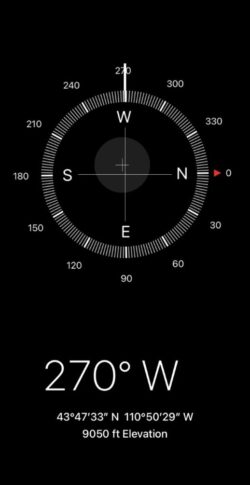
The 270 degrees W (west) shows the direction the cell phone was pointing, useful for orienting to a typographical map.
__________________________________

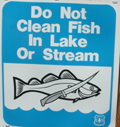
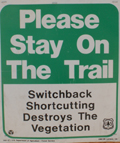
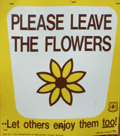
Do not bring these backpacking
plate, fork (just use your cup and spoon)
firearms, radios, axe
clothes that have been rinsed or dried with mosquito-attracting scented softeners (dryer sheets can make a greasy stain on clothes if they get stuck to them, and the softeners can decrease the lofting and wicking of garments)
a big bath towel (use cloth single fold diapers, or a bandanna or a light, small towel)
potholders (use the diapers or gloves–but don’t use polypropylene gloves, they’ll melt)
blue jeans (they’re too heavy, dry too slowly). Try lighter pants/fleece pants or maybe just shorts and longjohns and rain pants. If it’s too cold at night for only those on a summer trip, it’s time to go to bed. Get in your sleeping bag.
anything in a glass container, perfumed anything (mosquitoes),
sweatshirts–dry too slowly, can be dangerous to depend on cotton if it’s wet and or cold–try more, thinner layers of polypropylene, silk or wool
salt tablets (salt tablets can irritate your stomach and cause nausea and/or vomiting)–but a few salty soups and snacks area good idea to replenish salt after sweating. Some have needed to be rescued when they failed to include salty snacks in their diet, hiked a lot, got very hot and sweated a lot (sweating is your body’s number one way to to cool down), then could no longer sweat because they did not have enough salt to produce sweat, and were unable to even walk, and were starting to die from the heat. Lack of salty foods can be as dangerous as dehydration. “Easily digestible salty snacks to replenish what you lose through sweat” are recommended in a NPS hike preparation checklist.
strong antihistamines (ask your doctor about your prescriptions or shots)–some block your sweating ability
canned bacon–too much grease to pack out, too much mess to cook, splatters all over and attracts animals later —Instead try some Boar’s Head brand pre-cooked bacon in small plastic packages that do not require refrigeration.
a snake bite kit with razor blades or a suture kit–take a real first aid class and learn how to handle emergencies properly
frisbee — How are you going to chase one around without trampling plants?
drones / quadcopters are illegal many places (and in all National Parks, see also an index to Yosemite regulations)
(‘Bear bells’ do not work)
The NPS says:
“When hiking, periodically yell “Hey bear!” to alert bears to your presence, especially when walking through dense vegetation/blind spots, traveling upwind, near loud streams, or on windy days. Avoid thick brush whenever possible.”
“Bear bells may be a popular item to put on your backpack, but they don’t effectively warn a bear you’re in the area. Bears won’t hear the bells until you’re too close. Yelling, clapping, and talking are more effective ways of alerting a bear to your presence.”
(Cost of a handheld Global Positioning System receiver in 1977 $3,000)
cost of a GPS receiver $119 to $499.99 to…
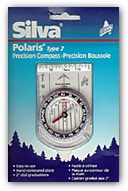 cost of a handheld compass $8.99 to $79.99
cost of a handheld compass $8.99 to $79.99
cost of Staying Found, by June Fleming or Be an Expert with Map and Compass, by Bjorn Kjellstrom: free at the library.
see also:
GPS is not infallible
To keep down on weight backpacking
consider sharing a camera, fishing gear, a tiny deck of cards, small binoculars
bring a hotel-sized or almost used-up bar of soap in a baggie—but never use even biodegradable soap in/near streams or lakes, every make/model of biodegradable soap pollutes
wait until you get home to shampoo hair; wear a bandanna, braids during the trip
see also: Camping solutions for women
cut a slice off a stick of unscented anti-perspirant and put it in a baggie instead of bringing the whole container, it’s lighter and takes up less space in the bearbox – don’t try to take it out of the baggie to use it as it will crumble, just smear it on using the inside of the baggie – don’t use scented as it will attract mosquitoes
bring a brand-new sharp razor and shave with soap and water only or don’t shave–you’ll look scruffy and mountaineer-like fast
squeeze a little toothpaste into a baggie instead of bringing the whole container- and don’t forget that this will smell like food to the animals so store it from them – – but think twice before you cut the handle off your toothbrush
instead of heavy running shoes for your second pair, you might want to try cheap, light aqua socks (but check the weight, some are as heavy as shoes). If you choose open-toed sandals, you might want to wear thick socks with them; the last thing you need is scuffed toes. If you tie them outside of your pack while they dry after crossing streams tie them on securely.
bear spray for our Grand Teton trip or for any trip, a water purifying pump, compass, or bear-resistant food container, the club probably has enough to share (but check with us before the trip to see how many people are going)
A pack, tent, or sleeping bag–you can rent them.
Do buy soon:
Boots, so you can wear them around and break them in. Buy boots late in the day, after your feet have swollen some. Have the salesperson measure your feet–don’t rely on your street shoe size. Bring the two pairs (one light, one heavy) of socks you’ll wear with the boots and any orthotic devices you’ll use. To carry a pack most people need boots that go up over their ankle. The cool- looking pair might not be the best fit. Spend some money on these, you’ll use them for a long time. Many places will let you return pairs you only wore inside if it turns out they are the wrong size.
—Leave in the trunk of your car
Extra clothes, maybe including good clothes to go to a nice restaurant after the trip.
More recreational items like books to read, art supplies. A small raft, paddles and life jackets for floating down the Merced river would save you the fee to rent one. Bath towels.
Leave the ice chest for snacks on the drive up in the bearproof footlocker sized storage at the backpacker’s or trailhead parking lot.
An ice chest brought empty could be filled after the backpack with goodies for any camping you do after our trip, just be sure you leave it, and any toiletry items or snacks for after the trip in one of the bear-proof boxes at backpacker’s parking (or some trailheads) while we are backpacking, not in your car. Bears also try to break in when they see things that look like food containers, so no bags, boxes or bottles should show through the windows. For that matter, try to leave your car looking empty so humans don’t break into it.
—- Meanwhile, back at the trailhead, you didn’t really clean out your car, but a bear will (as in these Park Service photos):
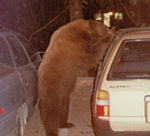
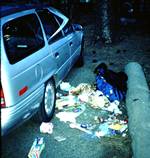
For a short backpack trip, you can get by without buying expensive freeze dried food, or even without cooking. But most people like some hot food and something resembling a main dish for dinner.
With the potential exception of roasted marshmallows, we only cook on a stove in the wilderness. Save the BBQ and it’s animal attracting drippings, for established not-backcountry campgrounds. (And at high altitudes, campfires are prohibited most places you might backpack.)
Consider this if you want to go to the top of a peak. You might not want to bring a stove at all. If you spill some boiling water on your hand, for example, you won’t have enough cold water to pour over the burn to stop the burning and ease the pain. You can get by just fine (or even be somewhat gourmet) with cold food.
No-cook backpacking food:
You really can have a filling, tasty, healthy meal from just trail snacks and water. Go to GORP and hiking snacks for a long list of ideas.
Chocolate is a food group.
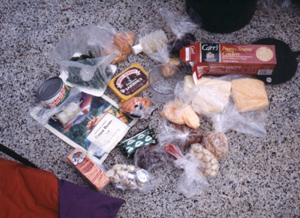
Instant hot chocolate (you’ll want something warm and liquid most early mornings or drizzly evenings), tea (or hot tea and Tang) and instant (thick or thin) soups can round out a low- or no-cook menu.
Instant soups might normally be too salty for you but you might like them when you crave saltier things. Some people also crave spicier food–so the Nile Spice black bean soup might be perfect. When you have been sweating a lot you need to replace your salt or you will not be able to sweat to cool off!!
If you want main dishes, don’t spend $8-$15+ on tiny portions of expensive freeze-dried food. Try instead fairly quick-cooking boxed or packaged noodle or rice mixes, like Lipton Spanish rice, noodles romanoff with extra cheese, Betty Crocker hash browns, grocer’s house brand entrees/thick soups in cups. If you boil pasta you will need to strain the cooking water (and pack out the food bits) before you dispose of it far away from the campsite. Don’t forget your favorite flavor of instant packaged gravy and instant mashed potatoes.
If you’re not used to the flavor of powdered milk it can spoil the taste of mixes. Try new food ideas at home first. You might get by without milk, and not notice the difference. Instead mix in extra
margarine (you’ll want the calories).
Or try a taste test in advance of various food-in-a-cup – Trader Joe’s, Nile Spice, Safeway Select, Knoor, Fantastic Foods. They won’t fit in the bear canister in their cups, so you’ll have to pour
them into baggies, and pack instructions for rehydrating.
Just think in advance–is it fairly simple, can I just add hot water and simmer it, or is there a chance it’ll stick to the pan and require a messy cleanup?
Flour tortillas can be filled with re-hydrated beans / grated cheddar / hot sauces.
Fully cooked, no refrigeration required, smoked Boar’s Head bacon for a high fat fix, but maybe not until you have been on the trail for a couple of days and are acclimated to altitude. (See at altitude for more on traveling at a high altitude).
One exception to the ‘no freeze-dried food’ rule might be to take care of veggie cravings. Mountain House freeze-dried green beans and peas are really good hot, or rehydrate and chill
them and add a can of tuna in oil and the right amount of white or red wine vinegar and powdered salad dressing mix and you have a salad craving fix.
But what if this doesn’t add up to a completely ‘balanced’ diet? On a short trip it really isn’t anything to worry about. Add some vitamin tablets for security if you want.
Yes, most people bring too much food, but that’s okay. You need a variety. Sometimes you find that most of what you brought just doesn’t look appetizing, or you are just so tired and you can only fathom eating water and cashews for dinner. In which case you need lots of cashews. So it doesn’t matter if you have leftovers of other things.
Repack foods to cut down on weight. Leave instant soup and others in their envelopes but don’t bring the boxes; just write out the instructions or cut them out and tape them to the baggie. Pre-measure instant potatoes into serving-size baggies and put instructions with them.
Double bag at least the powdered items, if not everything, in good-quality plastic bags, not the giveaway ones from your grocer’s produce section.
Finally, pack a complete list of what you brought so you don’t forget anything. Specifically list major ingredients like margarine. The head cook and food packer may have planned two sticks (8 tablespoons) as ingredients in various main dishes and only one stick for ‘extra’ so it’s important that other cooks know how much to not use on popcorn.
At night- no midnight snacks in your tent, or even toothpaste that smells like food to bears.
International travelers… it is not uncommon for customs agents to confiscate food you bring, so allow time and money to replace and repackage it.
http://sierrawild.gov/bears/how-pack-bear-can has this on it’s backpacking food list: “Backcountry Food Suggestions: Trail mix, String cheese, Jerky, Tortillas, pita bread, Dried fruit, Nutrition/energy bars, Peanut butter , Salami and sliced meats, Powdered milk, Granola, Nuts, Instant coffee and tea, Hot chocolate, Candy, Spaghetti, flat pasta, Mac and cheese, Burritos (dehydrated beans, rice, cheese), Soups, Oatmeal, Tuna packets, “Tasty Bite” (Indian food packs), Fresh veggies (for the first few nights), Freeze-dried meals, Condiment packets , Chocolate, More chocolate, Consider chocolate.”
Again, go to GORP and hiking snacks for a long list of ideas.
using a bear resistant food storage container has advice on how to fit everything in one
—————————————————————————-
Hiking Advice has hot weather hiking advice, hiking logistics and the answer to the question: When is the best time of day to cross a mountain stream?
Horses and pack trains have the right-of-way. Yield to them by stepping off the trail on the uphill side and stand still and quiet until they are well past you.
—————————————————————————-
Can a person who is prescribed an epi-pen risk going into the wilderness? and some sting prevention notes are at: Anaphylaxis quick facts
—————————————————————————-
We can expect thundershowers, possibly with heavy rain, possibly with hail, every few days in the afternoon, so bring decent rain gear (you’ll be happier and dryer with a rain jacket and pants instead of a rain ‘poncho’) and a tent with a full rain fly.
Hikes to peaks need to start early, so you can get to the top and get back down before the afternoon clouds build up.
During a thunderstorm, don’t take a shower or use a sink, including washing dishes. Don’t talk on a land line phone. Don’t use your I pod. Don’t get zapped! Please read Thunderstorm and lightning safety
https://www.nps.gov/yose/blogs/if-all-goes-well-there-will-be-no-swimming.htm
This advice is not complete without the pre-trip meeting.
Leave your make, model and license# of your vehicle along with your itinerary (marked on a map) with more than one responsible person along with who to call (Rangers? Forest Service? Sheriff?) and the number to call if you don’t check in by a given time. THEN check in with the responsible person when your return!
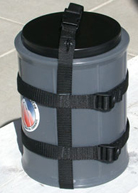
Yosemite National Park WILDERNESS PERMITS
According to the park service “wilderness permits are required year-round for a stay in Yosemite’s wilderness. They are not required for day hikes, except if for Half Dome.”
To reduce over crowding, Yosemite uses a trailhead quota system which limits the number of people who may begin overnight hikes from each trailhead, each day.
Some permits are available by reservation, some on a first-come first-served basis the day of, or one day prior to, the beginning of your trip.
Ways to get a permit are at: http://www.nps.gov/yose/planyourvisit/wildpermits.htm That page also has links to agencies outside the park that issue permits for trailheads you might start at outside the park, but then hike into the park.
Get all the official Yosemite National Park wilderness info at: http://www.nps.gov/yose/planyourvisit/backpacking.htm
At that page, at least during the busier times of the year, you can often find a link to a page which lists trailheads and the days they are already booked.
The text says “NO reservations available on the following dates for the following trailheads as of (date).” If the date or trailhead isn’t listed, space is available.
Link to the trailheads availability page: http://www.nps.gov/yose/planyourvisit/trailheads.htm
The most popular and first Yosemite trailheads to fill are usually: Happy Isles → Little Yosemite Valley, Happy Isles → Sunrise/Merced Lake (pass through), Glacier Point → Little Yosemite Valley, Sunrise Lakes and Cathedral Lakes.
At the Yosemite wilderness centers there are often binders with ratings of trails by number of stock per day, camping areas by number of campers per night and bear incidents at camping areas by occasional or frequent.
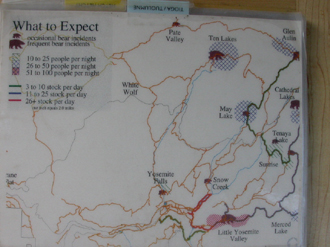
Yosemite trail conditions info is at:http://www.nps.gov/yose/planyourvisit/wildcond.htm
The Yosemite park service trail descriptions page (with some photos) starts at:http://www.nps.gov/yose/planyourvisit/trails.htm
Yosemite info for long distance hikers, including people who want to hike the whole John Muir Trail or Pacific Crest Trail and how to mail non-perishable food to yourself, is at: http://www.nps.gov/yose/planyourvisit/jmt.htm
Does it seem like tooooo much trouble to get a permit? Backcountry rangers patrol and check out campers. Out-of-bounds campers (camping where it is not allowed) or those without permits have to pack up and walk back out.
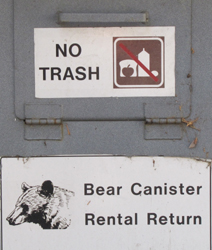 There are lots of 24-hours-a-day places to return rented canisters.
There are lots of 24-hours-a-day places to return rented canisters.
_____________________________________________
Photo below of a long line of people on the Half Dome cables taken with a telephoto lens from Olmstead Point near Tuolumne Meadows:
There is info, advice, (with photos and maps) about the hike to the top of Half Dome here.
Including
The two choices of trails most people use for the start of the hike, one of which can be a half hour faster on your way back down,
Common mistakes people make that you can skip doing,
Logistics about the time it takes, including that it can take a minimum ONE hour to get from the base of the subdome to the top of Half Dome.
Logistics of the cables use,
A great Yosemite park video to watch
Dates the cables have gone up and come down, back to 2011 (more snow pack some years)
Logistics of getting a permit (well in advance or very near the date you want to go), including the most popular days.and the daily Half Dome permits lottery success rates,
Why there are permits required,
Where to camp along the hike to Half Dome. (Camping is not permitted on top of Half Dome.)
A cautionary tale of: “The salesperson advised the subject not to wear his new boots on his upcoming Half Dome hike, since new boots that haven’t been broken in on shorter hikes often cause hot spots, blisters, and soreness on a long, strenuous hike like the Half Dome hike. Even so, the subject chose to wear his new boots. . . .
Which Yosemite valley campsites are the best for a short walk to the trailhead at Happy Isles or a short walk back after a Half Dome hike that took a bit longer than you expected and ended after the free shuttle buses are running,
And much more, again, here.
Just before sunrise, people with headlamps going up the cables:
NPS photo of the view from the top of Half Dome down to Yosemite valley: (the man at the left is at the top edge, the “lip” of Half Dome)
___________________________________________
____________________________
________________________________________________
Yosemite fishing regulations are at:
http://www.nps.gov/yose/planyourvisit/fishing.htm
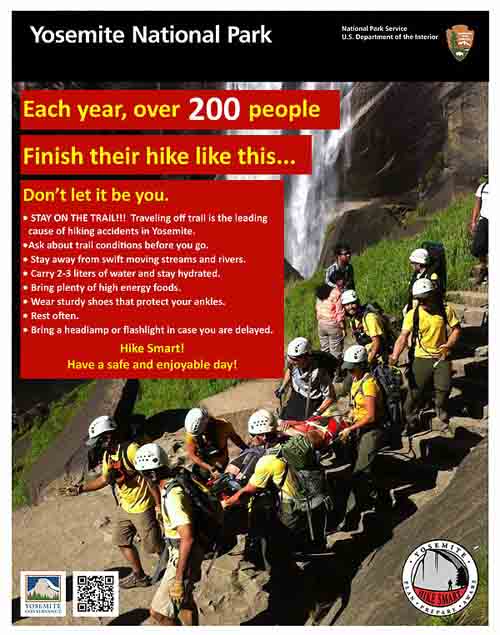
Part of a Yosemite press release on safety:
For Immediate Release
Play Smart, Play Safe in Yosemite National Park
Last year, 166 search and rescue incidents occurred in the park, and may of these could have been avoided if the users had taken some extra precautions.
· Tell someone where you are going: If you do get hurt or lost, someone will know where you went and when. Rangers then know where to start searching if you are overdue.
· Bring extra water: You will better enjoy your hike be and avoid injury or sickness well hydrated. Remember that all water in the backcountry needs to be treated for bacteria like giardia lamblia.
· Bring extra food: Your hike may take longer than expected and you may need it if you do get hurt or lost.
· Bring rain gear: Weather changes quickly in the park and hypothermia may set in.
· Bring a flashlight in case your hike takes longer than expected.
· Bring a map and compass and know how to use them.
· Bring a whistle: It can alert fellow hikers that you are in need of help.
Rivers and creeks are dangerous in spring. Take care when fording and avoid swift water. Do not wade above waterfalls. The snow level on the trails is around 7000 feet. Trails can be easily lost in snowy conditions. Avoid cliff edges and do not scramble or climb rocks unless you are skilled and have the right equipment. Ask yourself if you are in the physical shape to do a strenuous hike. There are plenty of hikes for all skills and physical levels. Select the right one for you.
Go ahead and grab the boots. Yosemite’s trails and backcountry are truly spectacular and rewarding. Taking extra precautions will make the experience more enjoyable. Getting rescued may be memorable, but it certainly ruins the experience.
-NPS-
http://www.abovecalifornia.com/lib/index.php
favorite chapters are:
VII THE GLACIER MEADOWS
X A WIND-STORM IN THE FORESTS
XII SIERRA THUNDER-STORMS
XIII THE WATER-OUZEL
Leave no trace camping has these basic principles:
Plan Ahead and Prepare
Travel and Camp on Durable Surfaces
Dispose of Waste Properly
Leave What You Find
Minimize Campfire Impacts
Respect Wildlife
Be Considerate of Other Visitors
During any long hike or backpack,
To truly be able to leave no trace and follow backcountry rules about camping the proper distance from a lake or digging your personal latrine hole the proper distance from water, etc., you will need to know how far 100 or 200 feet is. Lay out a tape measure at home and walk it and count your paces.
How to poop in the woods.
_____________________________________________
A few clues about distances:
about eight miles away the shapes of prominent trees and buildings become distinguishable
about 2 miles away you can see individual windows in a building
about a mile away a person looks like a moving dot without limbs
about 400 yards (a little under a quarter of a mile) away you can make out a person’s legs or a kayaker’s arms
about 250 to 300 yards away faces are discernible (but not recognizable)
_____________________________________________
below: swimming next to a waterfall at Glen Aulin
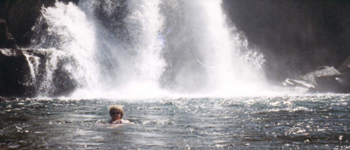
Yosemite National Park swimming
![]()
FOR A LAUGH (or to make sure you aren’t mentioned there), go to Camping Blunders
Don’t cross a creek this way:
from the National park Service Morning Report
Tuesday, August 03, 2004
Delaware Water Gap National Recreation Area (PA)
Fatal Fall Into Raymondskill Creek
Tatiana Culvert, 44, of Effort, Pennsylvania, was killed on Saturday afternoon when she slipped off a log and fell into Raymondskill Creek. According to friends who witnessed the accident, she was one of a group of six visitors who crossed the creek on a log that was about 30 feet above the water. Everyone else in the group crossed by straddling the log and sidling over, but Culvert attempted to walk across. She lost her balance, held onto the log for a moment with her hands, then lost her grip and fell into the creek below. The water was only about ten inches deep at that point and Culvert struck the rocks below the stream’s surface. Her friends immediately pulled her out of the creek and reported later that she remained conscious for a short time. One member of the party hiked out to the trailhead and called 911. Park rangers, paramedics, and the Milford Fire Department rescue team responded immediately, arriving with a few minutes of the initial call. By the time the rescuers arrived, Culvert was unconscious and had stopped breathing. CPR was begun and a defibrillator unit was used at the scene, but Culvert never regained consciousness. The cause of death is presumed to be traumatic injury associated with the fall. The accident occurred in an area where there are no established trails. Culvert is survived by her husband and five children. [Submitted by Doyle Nelson, Deputy Superintendent]
More stories like this one are at:
“Do not stand in moving water, even if shallow. If your foot gets trapped in the rocks, the current will push you over, wedging you foot tighter, and pushing your head underwater. You will drown. Others have drowned in 2 feet of water this way.”
http://www.nps.gov/yose/photosmultimedia/ytp.htm click on Beautiful but Deadly
The problem is that mama bear can teach a cub to climb up the tree, climb out on the pole, then jump down, snagging your bags of food. Yosemite National park does not use this food protection system any more, and people traveling to / back packing in other parks wilderness areas would be wise to use bear-proof backpacker sized food containers.
http://www.yosemite.ca.us/history/handbook_of_yosemite_national_park/camping.html
From the section on what to bring, for historical interest, but not real practical:
“Sleeping equipment is a most important consideration, since about a third of one’s time is spent in bed. The type of bedding is largely a matter of choice, but as experienced campers differ materially as to the best, more than one will be mentioned. All bedding material is best if dark in color, so as not to show the dirt. Three wool blankets of about five pounds each are ample for cold nights in the higher altitudes, and two are sufficient for usual needs. A 10-ounce canvas about seven feet square when folded will serve as a ground cloth and also an extra covering. If the blankets are folded lengthwise and sewed along the bottom and side, or fastened with large safety pins or small blanket pins, this sleeping-bag will give greater warmth and comfort. The canvas may also be made into a bag.
The following quotation from an Outing Announcement of the Sierra Club describes a lighter weight sleeping outfit recommended for use in this region: “This should consist of a sleeping-bag made by doubling two wool comforts, so as to give the bag the greatest length, and sewing securely across the bottom and two thirds of the way up the side. This bag should be lined and covered with gingham or sateen, which should project a foot or two beyond the top as a loose flap. The wool comforters may be sewed up into separate bags as indicated, and one lined and the other covered. One bag can then be slipped inside the other for ordinary, use and removed easily for knapsack trips where economy of weight is desirable. A tall person will require extra length comforters. Blankets are too heavy and cotton comforts are not desirable. A waterproof sheet or covering at least six by six feet should be taken. Canvas and the ordinary rubber blanket are entirely too heavy for this purpose. The most serviceable and satisfactory material is waterproof silk (balloon silk). It is strong, durable, perfectly waterproof, and very light. A piece five yards in length, cut in half and sewed together along one side, will make a large sheet that will protect the sleeping bag from the ground and form a covering as well.
One thick lamb’s wool batting comforter is lighter and has about the same warmth as two ordinary wool comforters, and an eiderdown quilt is still lighter for the same amount of warmth but not so serviceable. If a sleeping-bag is used it should be so made that it is capable of being aired easily. Should the bedding prove inadequate for the coldest nights, a hot-water bottle, heated rock, a pair of soft woolen bed socks will probably solve the difficulty by keeping the feet warm. A small down cushion makes a very light but comfortable pillow. Air cushions are less comfortable but more convenient.”
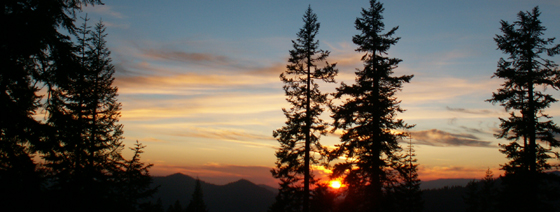
The author of this webpage, (written as a homework reading assignment for my students), does not give any warranty, expressed or implied, nor assume any legal liability or responsibility for the accuracy, completeness, or usefulness of any information, product, or process included in this website or at websites linked to or from it. Users of information from this website assume all liability arising from such use.
